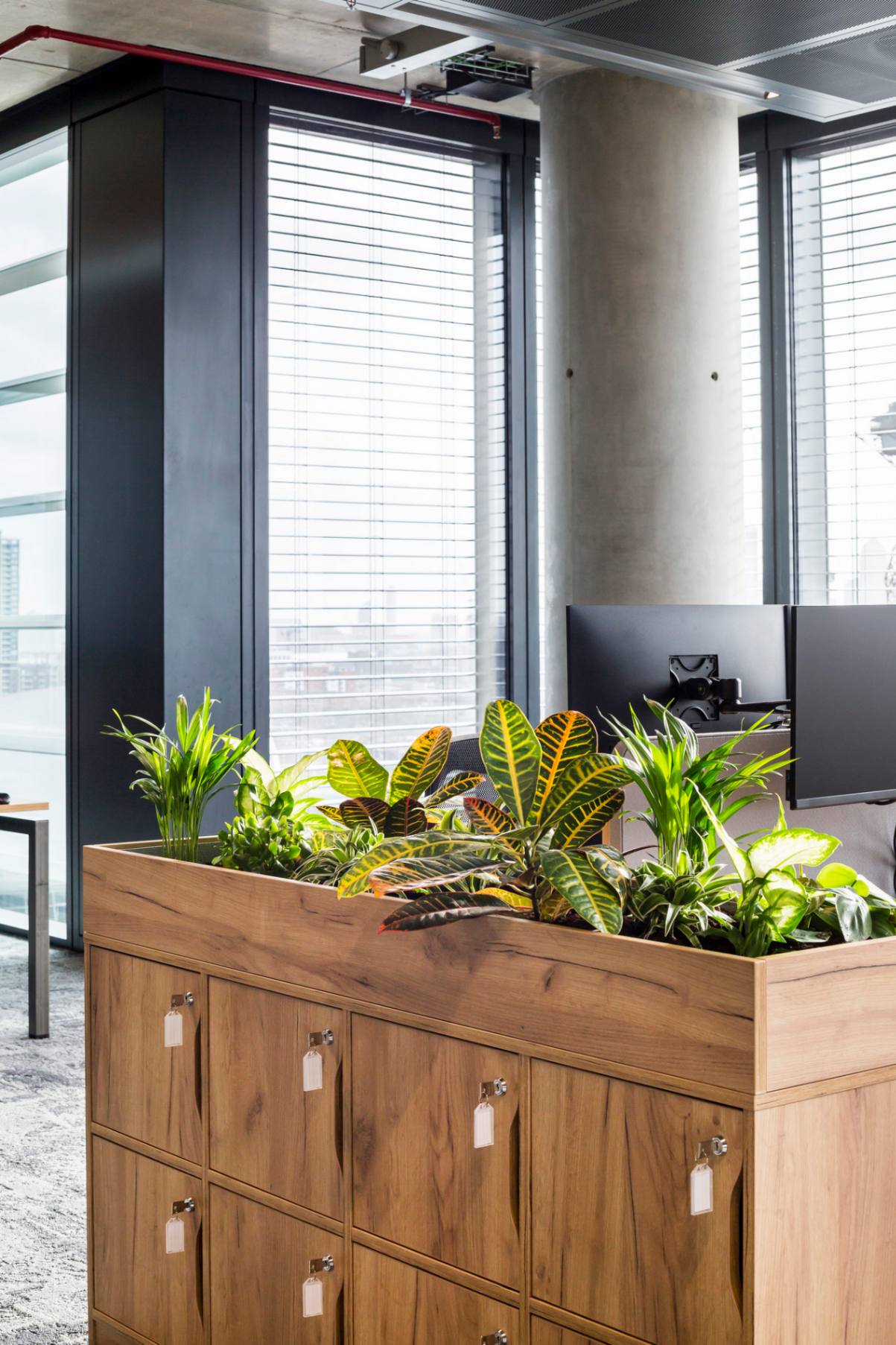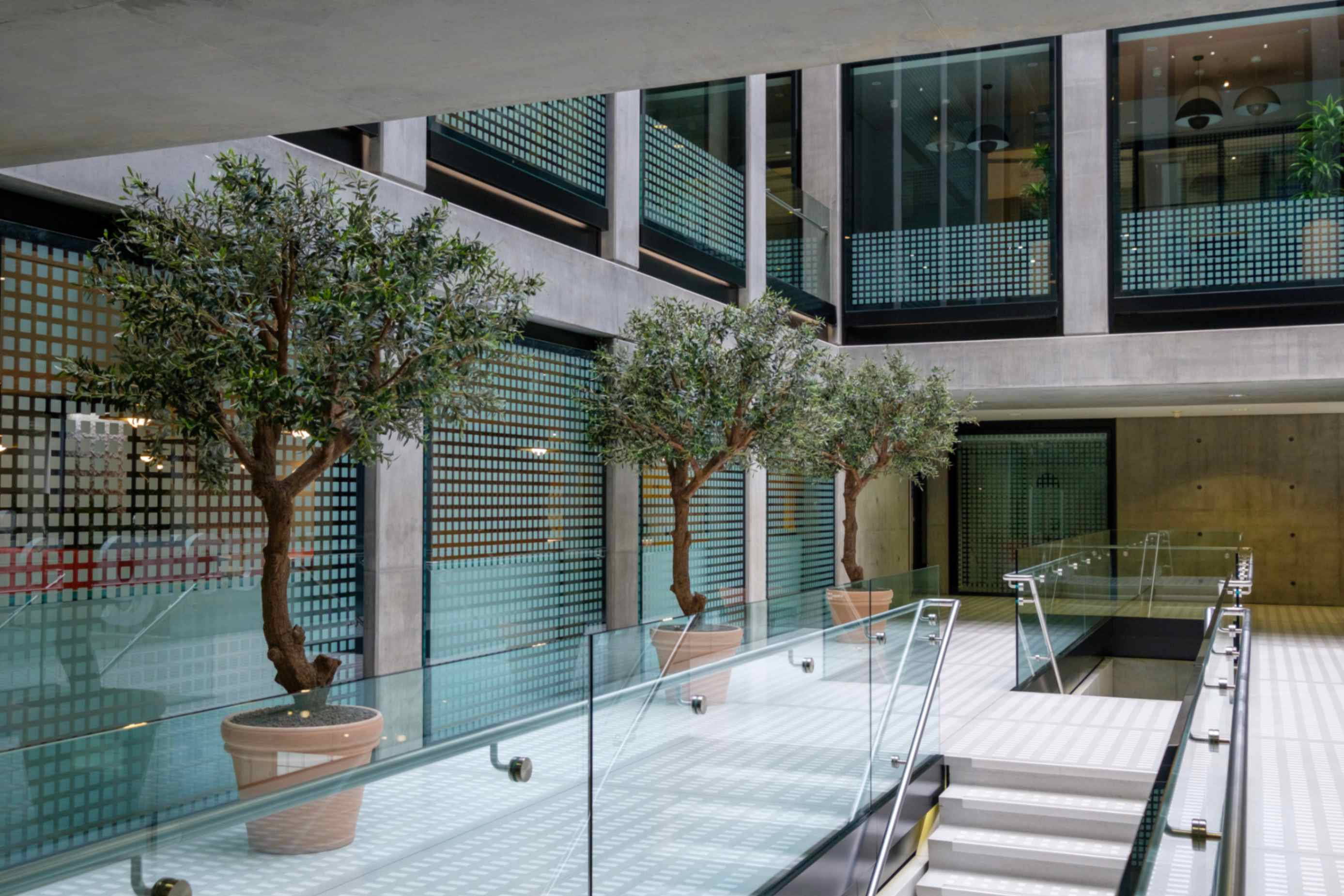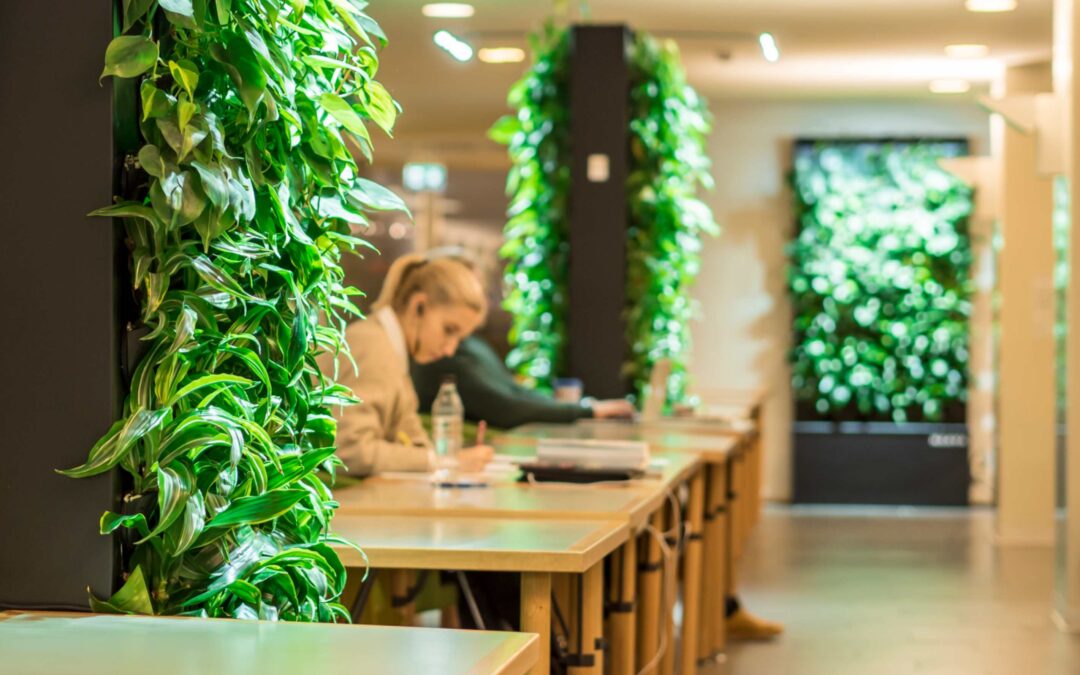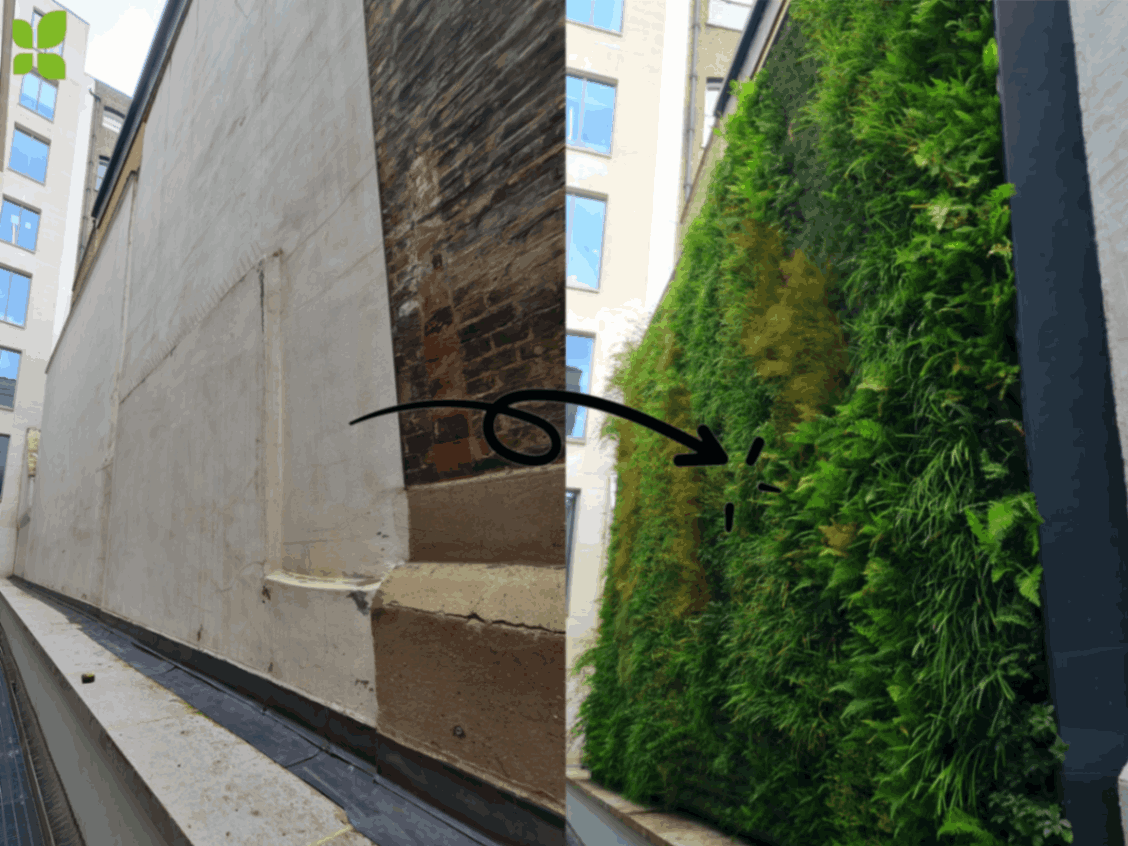In the heart of our concrete jungles, amidst the hustle and bustle of daily urban life, lies a design philosophy that seeks to reconnect us with the natural world: biophilic design. When it comes to optimising small spaces, planting emerges as a design philosophy, which promises a better working environment that is equally as beautiful.
In This Post, We Will Cover:
- Maximising Small Spaces | Why We Care
- Benefits Planting Solutions Have On Small Spaces
- Key Biophilic Design Strategies for Small Spaces You Should Know.
- The Role of Government Policies
- Our Opinion On Planting In Small Spaces?
Maximising Small Spaces | Why We Care
Urban living often means dealing with limited space. As cities become more densely populated, the challenge of creating comfortable, functional, and aesthetically pleasing spaces within these constraints grows. Small space optimisation is not merely about making the most of what we have. Biophilic design offers innovative solutions to this challenge to bring the calming, restorative effects of nature into every space.
Benefits Planting Solutions Have On Small Spaces
In general:
The advantages of incorporating natural elements into our living and working environments are actually pretty substantial. Studies have shown that biophilic design can significantly:
- Improve Air Quality
- Enhance Mental Well-being – particularly important in small spaces.
- Boost Creativity and Productivity
- Built nature connections even when the outdoors seems all so far away.
Terrapin Bright Green’s “The Economics of Biophilia” reported a 6% increase in productivity and a 15% increase in well-being. Similarly, research published in the “Journal of Environmental Psychology” highlights the positive impact of natural light on mood and energy levels.
Benefits For Office Spaces.
The introduction of natural elements into the workplace has been linked to substantial benefits in employee health, satisfaction, and efficiency. If you want to look into these benefits more, have a look at the study by Terrapin Bright Green. We found it really interesting, particularly when it came to the stats. They say views of nature and natural light are associated with lower stress levels and higher satisfaction among office workers. Also, offices designed with planting report a 15% increase in well-being and creativity, demonstrating the tangible benefits of integrating nature.
Key Biophilic Design Strategies for Small Spaces You Should Know.
Right, let’s get you the perfect biophilic design solution:
- Vertical Gardens and Living Walls
- Multi-functional Furniture
- Natural Light Optimisation
- Biophilic Patterns and Textures
- Practical Tips for Implementation
Vertical Gardens / Living Walls
One of the most effective strategies for incorporating biophilic design into small spaces is through the use of vertical gardens and living walls. These installations not only beautify the space but also improve air quality and create a sense of connection to nature. They represent a creative solution to the limited floor space typical of urban environments, allowing for a lush greenery presence that can transform the ambience of any room.
Check out this one we did for an otherwise dull alleyway in London or read here for our ultimate guide to green walls.
Multi-functional Furniture
Innovative furniture design can play a significant role in biophilic interiors, especially in small spaces.
Furniture that serves multiple purposes is going to be your friend here. Things like coffee tables with built-in planters or desks with integrated greenery saves space, and gets nature inside the workplace. These pieces allow for a seamless integration of nature into daily life, making biophilic design accessible and functional.

Natural Light Optimisation
Maximising natural light is a cornerstone of biophilic design. The strategic placement of windows AND mirrors can enhance the distribution of sunlight throughout a space, supporting both plant life and human well-being. Natural light not only helps in reducing electricity consumption helps regulate circadian rhythms, improving sleep. And hey, we all want that.
Patterns and Textures:
Incorporating nature-inspired patterns, textures, and materials into interior design is another effective way to embed biophilic principles into small spaces. Materials that mimic the look and feel of natural elements, such as wood, stone, and bamboo, can mimic nature’s tranquillity. Patterns that reflect the randomness and complexity of nature can also have a calming effect, reducing stress and enhancing creativity.
Practical Tips for Implementation
Implementing biophilic design in small spaces requires careful consideration of the types of plants and materials used. Opt for low-maintenance, compact plant varieties that thrive in indoor conditions and consider the light requirements of each plant.
When selecting pots and planters, prioritise eco-friendly materials and designs that complement the overall aesthetic of your space. Arranging plants at different heights and densities can create a more visually engaging and efficient use of space.
Click here to see our team who can help you implement your biophilic dreams.
The Role of Government Policies in Promoting Green Construction
The advancement of biophilic design is also influenced by governmental policies and initiatives aimed at promoting green construction and sustainable design practices. Policies that incentivise the inclusion of green spaces, energy-efficient lighting, and natural ventilation in building projects can drive the wider adoption of biophilic principles.
Such initiatives not only contribute to environmental sustainability but also promote the well-being of urban populations by fostering closer connections with nature.

Well, What’s Our Opinion On Planting In Small Spaces?
Biophilic design offers a transformative solution to the challenges of living and working in small, urban spaces. By integrating nature into our environments, we can enhance our well-being, boost productivity, and build relationships with the natural world.
No matter the route you choose to take when adding nature to your space, nature’s power can revolutionise our urban landscapes So what’s it going to be? Vertical gardens? Optimisation of natural light? Or the use of nature-inspired materials? We need to make our environments healthier, more vibrant, and more connected to nature before concrete takes over our lives.
We know the complexities of urban living, but transforming environments for tranquillity, creativity, and sustainability is an ever-growing need. This is something that took centre stage in the Workspace Design Show 2024. The journey towards a more biophilic urban future is not just about bringing the outdoors in; it’s about rekindling our inherent connection to the natural world. For the benefit of our communities, for our environment, and for ourselves.




Recent Comments